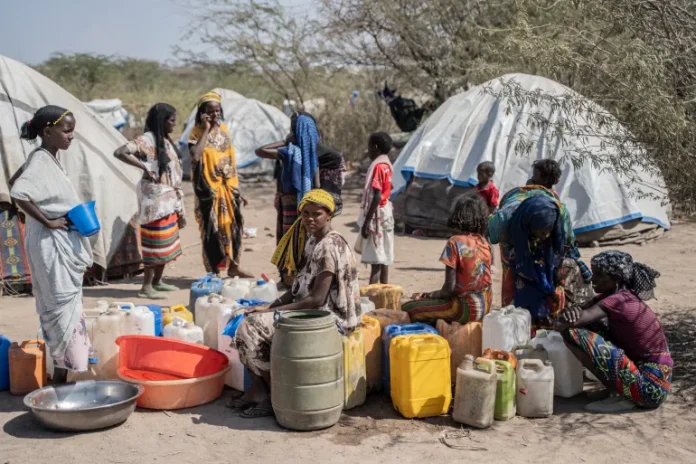Malnutrition rates in Ethiopia have reached “alarmingly high” levels and 4.4 million pregnant women and young children urgently need treatment, the World Food Programme (WFP) warned on Tuesday.
Speaking at a UN press briefing in Geneva, Zlatan Milisic, WFP country director for Ethiopia, said child wasting rates in Somali, Oromia, Afar and Tigray regions have exceeded the 15 per cent emergency threshold.
“Ethiopia is absorbing crisis after crisis,” Milisic said. “What’s particularly worrisome is that drought, conflict, and refugee influxes are looming shocks that could push already vulnerable communities over the edge.”
According to the official, despite WFP providing food and nutritional support to more than 3 million people at the start of 2025 – mostly through ration cuts – the agency is now forced to suspend treatment for 650,000 malnourished women and children due to funding shortfalls.
Operations for 800,000 refugees, including 100,000 Sudanese, are also at risk, with food and cash aid due to run out by June, he said. A total of 3.6 million people could lose access to WFP assistance if emergency funding does not arrive.
Through September, WFP is asking for $222 million to sustain operations and scale up to reach its 2025 goal of 7.2 million people.
“We have the teams, logistics, and capacity in place,” Milisic said. “What we lack are the resources to act at the scale the crisis demands.”
Conflict, instability and drought are the main reasons why more than 10 million of Ethiopia’s 130 million people face the threat of famine.
The East African country is recovering from a two-year brutal civil war between federal forces and rebels in the northern Tigray region that ended in November 2022 and killed at least 600,000 people.
Tensions are rising again between long-time adversaries Ethiopia and Eritrea over Addis Ababa’s quest for access to the sea, raising fears of another conflict in the Horn of Africa just seven years after the two neighbours restored relations.
Continued violence and instability in Ethiopia’s Amhara region also hampered humanitarian operations, WFP said, adding that a forecast of below-average rainfall in May in southeastern Ethiopia could further worsen the situation.
